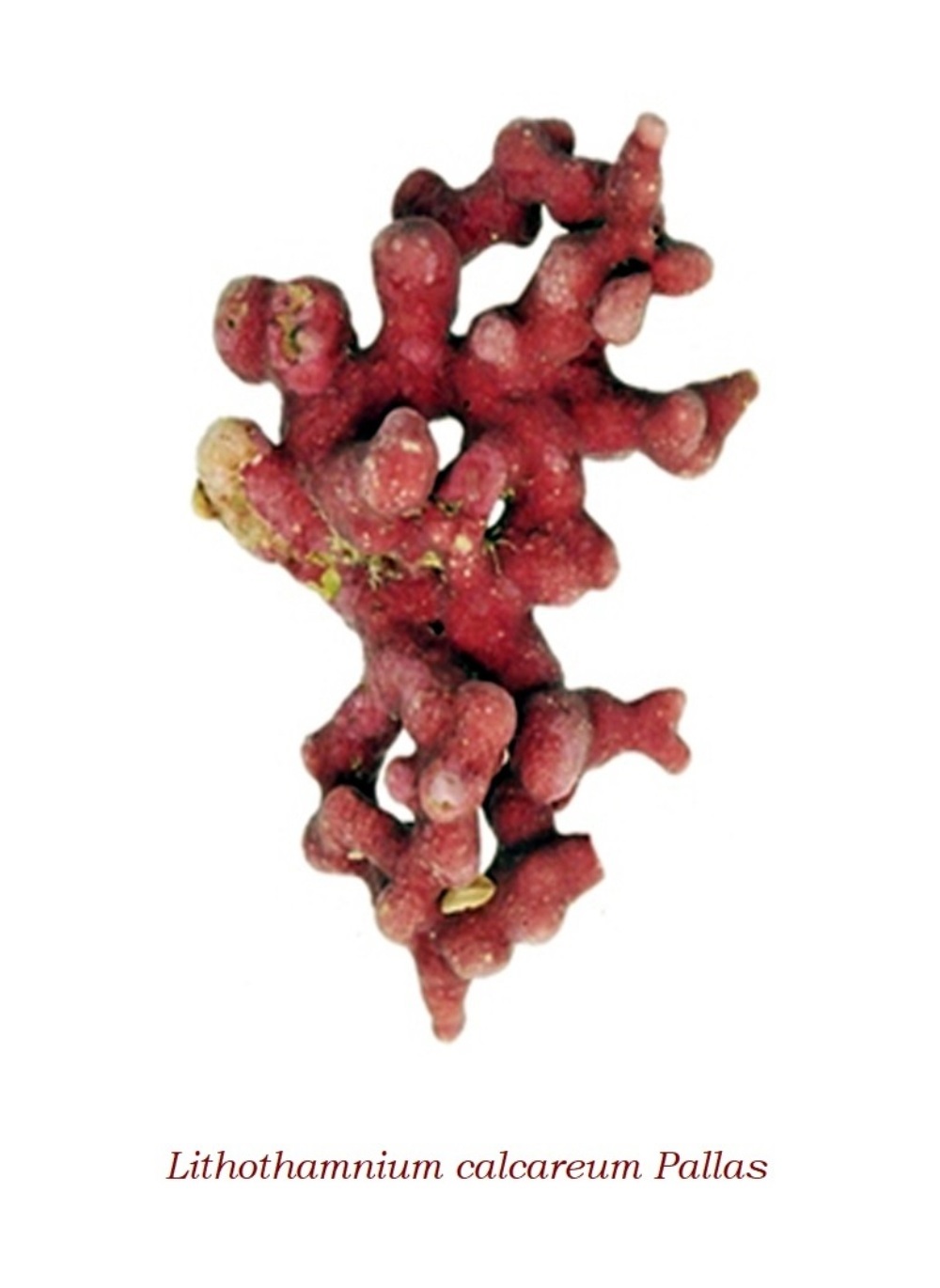Lithothamnium calcareum
Lithothamnium calcareum
Calcareous lithotamnium (Lithothamnium calcareum Pallas) is a red alga belonging to the Corallinaceae family
Systematics –
From a systematic point of view it belongs to:
Eukaryota Domain,
Kingdom Plantae,
Rhodophyta Division,
Florideophyceae class,
Subclass Corallinophycidae,
Order Corallinales,
Corallinaceae family,
Genus Lithothamnium,
L. calcareum species.
Etymology –
The term Lithothamnium comes from the Greek litho, which means stone and thamnion, a small tree.
The specific epithet calcareum comes from calx, calcium calcis: due to the calcareous content of this alga.
Geographic Distribution and Habitat –
Lithothamnium calcareum is a red algae typical of the seas of Great Britain and Ireland of which it forms the so-called “coral sand”, a substance rich in calcium used as a corrective fertilizer.
Its habitat is that of large colonies in the open sea where it grows up to 30 meters deep.
Description –
Lithothamnium calcareum is a red alga made up of monomer and crustal thalli that are composed of a single system of filaments that grow close to the underlying surface.
This alga reproduces by means of multiporate conceptacles and can live from 10 to 15 years, growing from 0.3 to 3 mm per year.
Cultivation –
From this red alga that lives in the seabed of Brittany, lithotamn is extracted which is used both for food supplements and in agriculture as a phytostimulant and soil conditioner.
Customs and Traditions –
Lithothamnium calcareum is a red alga that has been used for some time both for the preparation of food supplements and in the agricultural field as a phytostimulant and soil conditioner.
This alga is made up of more than 40 balanced nutrients, which, once processed, have a high solubility and availability for living beings.
This red alga has been used for decades in various countries for animal and plant nutrition. In addition to nourishing, they have a high reactivity and presence of mineral and organic components, providing a favorable condition for microbial life.
The main feature of Lithothamnion calcareum is the formation of precipitated calcium carbonate in its cell walls. For this reason it is marketed as a food supplement for calcium and other minerals in various countries around the world.
Furthermore, Lithotamnium is widely used in organic and biodynamic agriculture, as it performs several functions:
– phytostimulant: the high content of calcium carbonate (80-85%), magnesium (10-15%) and trace elements makes it an excellent product to promote the development of the plant and its self-defense capabilities. Plants treated regularly grow healthier and more vigorous thanks to the presence of trace elements and natural hormonal substances;
– soil improver: improves the structure and pH of acid soils; in soils tending to acidity, it can be used to increase the pH value and bring the soil close to neutrality. It is particularly suitable for restoring soils conducted with synthetic fertilizers, as the rich content of trace elements stimulates the activity of the soil microflora;
– it is an excellent fertilizer for horticultural or fruit production and particularly suitable for acidic and humus-poor soils as it is rich in calcium, magnesium and trace elements.
The composition of lithotmanium is as follows: 80% calcium carbonate, 10-15% magnesium and a small percentage of other chemical elements, that is precious microelements that contribute to the nutrition of the soil.
Preparation Method –
Lithothamnium Calcareum is used as a plant food supplement useful for bone health, inflammation and against gastric acidity and in this case it is sold mainly in the form of tablets.
Another use of this red algae is as a soil improver and stimulant for agricultural crops and in this case it is sold in the form of limestone powder and falls within the category of natural products useful in the biological control of crops.
This product is obtained from the micronization of this red alga.
Guido Bissanti
Sources
– Acta Plantarum – Flora of the Italian Regions.
– Wikipedia, the free encyclopedia.
– Useful Tropical Plants Database.
– Conti F., Abbate G., Alessandrini A., Blasi C. (ed.), 2005. An annotated checklist of the Italian vascular flora, Palombi Editore.
– Pignatti S., 1982. Flora of Italy, Edagricole, Bologna.
– Treben M., 2000. Health from the Lord’s Pharmacy, Advice and experiences with medicinal herbs, Ennsthaler Editore.
Warning: Pharmaceutical applications and alimurgical uses are indicated for informational purposes only, they do not represent in any way a medical prescription; therefore no responsibility is taken for their use for curative, aesthetic or food purposes.


